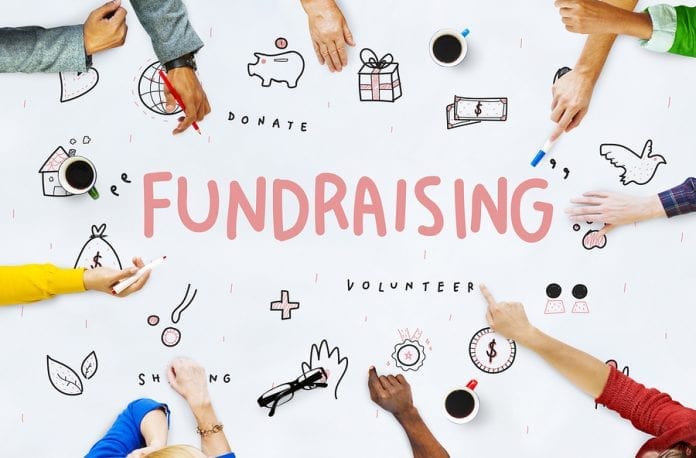Fundraising isn’t easy at the best of times. In the majority of cases, you’re asking someone to give you money and get nothing for it in return other than the knowledge they’ve done a good deed. In the current global financial climate, where people are watching every penny and cutting back on unnecessary spending, raising money for good causes is harder than it’s been for the past ten or twenty years.
It’s even harder if the cause you’re raising money for isn’t well-known. It’s one thing to try and raise money with the backing of a name or a logo that everyone’s familiar with, but trying to persuade people to part with their hard-earned cash for someone or something they’ve never encountered before is quite another. You’ll face suspicions that you might be trying to scam people, and even those who do donate might be cautious about where their money is going and what you intend to do with it.

Don’t let any of that dissuade you from trying. You sometimes have to think a little differently if you’re trying to raise money for a smaller or lesser-known cause, but it can still be done – and you’re more likely to achieve your goals if you follow the five tips we’re about to illustrate for you here!
Use Plenty Of Pictures
A well-chosen picture can say far more than several paragraphs of text, no matter how well-written that text is. If people don’t know what your cause is or haven’t come into contact with it before, they need to see it with their own eyes to understand it. That’s why photos and pictures are so important. Use images of the people or places who will benefit from the money you raise. If possible, contrast images of how things are now with images of how you’d like things to be if you’re successful. This doesn’t just apply to your website or fundraising page. It should also apply to any printed material you hand out, like leaflets or flyers. People will look at pictures before they read any of your text, so make sure those pictures make the biggest impact possible.
Use Every Grant Available To You

There’s only so much the public can give you, and the sad truth is that the type of person who’s likely to give to charity is already likely to be giving almost as much as they can possibly give. You’ll need help from elsewhere if you’re going to reach your goals, and that means you need to know which grants are available to you. Almost any charity (within reason) can apply for grants from either local or national government, and some of those grants are surprisingly sizeable. This has a knock-on effect when you’re trying to persuade the average person in the street to donate to you. If you can show them that your charity has been approved for a grant, it tells them that you’re legitimate, and that makes them more likely to donate.
Speculate To Accumulate
As counter-intuitive as this might seem, you sometimes need to spend money to make money with a charity. If your website or promotional materials are low-quality, people are more likely to be suspicious of your legitimacy or intentions. There’s always a risk that you’ll make back less than you spend, but that’s true of all charities. It’s similar to the dilemma faced by people when they play online slots. With very few exceptions, online slots players know that they’re sometimes going to come away with less than they started with. It’s the knowledge that there’s a reward on offer that keeps them going, and that’s why they don’t mind spending money in pursuit of it. Your chances are better than theirs, though. When you play UK Slot Games, you’re chasing a jackpot with no idea when it might arrive and no control over how it happens. With charity advertising, you can work to a budget and use your skills to persuade people to donate. Pay for quality when it comes to promotional materials, and hire skilled people to go out seeking donations for you if appropriate.
Take On Challenges

Sometimes, the reason people don’t donate to charity is that they’re not sure of the end goal. They might understand that you’re trying to build a facility, prevent disease, or help the needy, but they can’t see the mechanics of how their cash helps that to happen. It’s much easier for them to understand a simple challenge – one that involves sponsorship. Either you or your fundraisers might want to consider climbing a mountain, taking part in a marathon, or undertaking another form of physical challenge in return for people’s donations. That’s a much easier concept for people to grasp, and it makes them feel more like their money is going toward something specific.
Be As Specific As Possible
If you tell people you’re trying to raise one million dollars, but you’re only asking them for ten, they’re unlikely to feel engaged with your project because their ten dollars is so inconsequential in the grand scheme of things. The benefits of the money you raise should be broken down into stages. Your ultimate goal might be one million dollars, but what can you do if you make half a million? What difference would it make to your charity if you raised one hundred thousand dollars, or ten thousand, or even one thousand? People are more likely to feel emotionally invested if they can see how their donation contributes to a smaller goal and what that smaller goal is. Break your fundraising journey down into as many stages as possible. This also gives you a good reason to go back to them for further donations every time you meet one of the smaller goals because then you’re working toward the next one.

Fundraising can be exhausting, stressful, and demoralizing when it isn’t going well, but it’s also one of the most rewarding and life-affirming things you’ll ever do when it goes right. Give yourself a better chance of getting it right by following this advice, and there’s no limit to what you can achieve!









